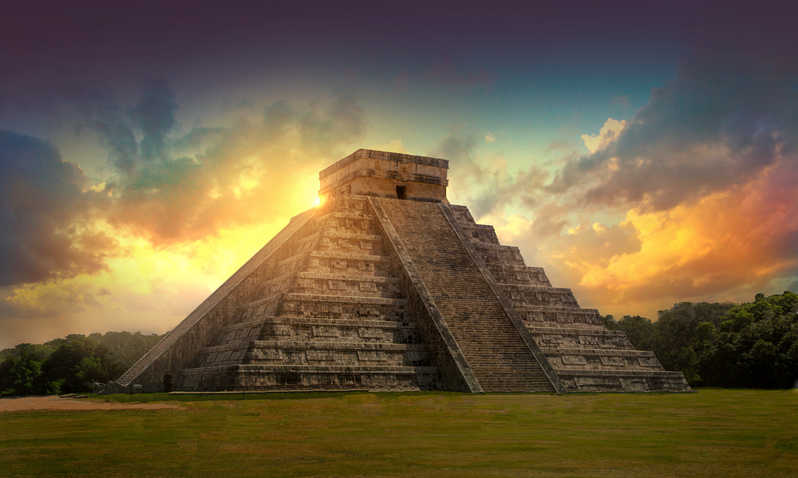The Ruins of Chichen Itza, heart of the Mayan Empire.


Chichen Itza is one of the most visited places in Mexico. Its Mayan archaeological site in the State of Yucatán is one of the largest in excavated area.
Its name comes from ‘Boca-del-pozo (Chichen) of the water priests (Itzá), therefore Boca de Pozo de los Itzáes.
The name is due to the sacred cenote next to which the Maya established their city and that was a fundamental part of their culture and beliefs and that was linked to the god Chaak, deity of rain and water.
If its name is derived from the huatesque language, it is translated as “bird-like snake”.
History of the City of Chichen Itza
When the Spanish conquerors arrived in XVI at the hands of Francisco de Montejo and the Franciscan Diego de Landa, they could only contemplate what had once been one of the most lively and active cities in America, since since the thirteenth century it had been abandoned , and already covered by dense vegetation.

Although inhabited since the third century A.D. the creation of a city of Chichén Itzá itself seems to begin in 525 A.D. when populations that came from the south were building settlements such as Tikal in Guatemala, Copán in Honduras, or Palenque, Mayapan, Ek Balam and Uxmal in Yucatán and Chiapas.
Its growth was exponential, exercising a supremacy over the rest of Mayan cities.
Visit to Chichen Itza
In 1988 Unesco surrendered to reality by granting the prestigious seal of World Heritage to the archaeological site of Chichen Itza. Already in the twentieth century (2007) the Kukulcan Temple swelled the list of Wonders of the modern World.
Some secrets of Chichen Itza
Founded ground and cobbled streets
Archaeological and field studies have shown that, when the Mayans arrived at the current Chichen Itza, they found an irregular terrain with lush vegetation that quickly transformed.
They laid the ground by digging it, placing structures and burying them to create a plain that they then covered with cobblestones to form streets and roads.

Social walls
Although Chichen Itza had a large number of warriors and was surrounded by walls, they did not exercise a defensive function.
As also happens in the ruins of Tulum (Yucatan) and other Mayan sites, the walls were used to divide the cities into classes or «neighborhoods» according to the social position.
The interior of the city was occupied by the nobles and their palaces while, as you went to the outer areas, it was more common to find the plain town and its simple huts.

The pyramid of the snake
The most mythical image of the archaeological site of Chichen Itza is that of its majestic 30-meter pyramid. This construction (a castle in its origin) was located in the center of the city and was erected in honor of Kukulkan or Quetzalcoatl, the feathered serpent.
This deity is one of the most important of the Mayan pantheon, responsible for the creation of the world, and its image is present both on the stairs of the pyramid and in many other constructions of the enclosure.
The largest calendar in Mexico
The pyramid of Quetzalcoatl has a body divided into two sides with 9 staggered areas on each side, making a total of 18 (number of months the Mayan calendar had).
It also has four steps, one for each end of the human body, with 91 steps per staircase and adding 364 steps.
If that is added to the top of the pyramid (the head) a total of 365, the number of days a Mayan year has.
The quetzal song
If you stand in front of the pyramid stairs and slap, the construction will return a curious distorted, almost animal sound.
It turns out that what is heard after the slap is a noise very similar to the quetzal song, a tropical bird of small size and bright colors that the Maya considered sacred.
The cenote of the warriors
Cenotes are natural wells that are formed from groundwater and land subsidence.

In the Mayan culture, the cenotes were considered the entrance to the underworld (Xibalbá) and many burials were made by throwing the corpse into the pool with its wealth and possessions.

The observatory
Baptized as ‘the snail’ by the Spaniards due to a spiral staircase that hides inside, this building is the perfect example of the great domain of astronomy that reached the Mayan people.
Observing the stars and applying very advanced mathematical knowledge for the time, the Maya designed their calendar and established the times of cultivation in their fields.